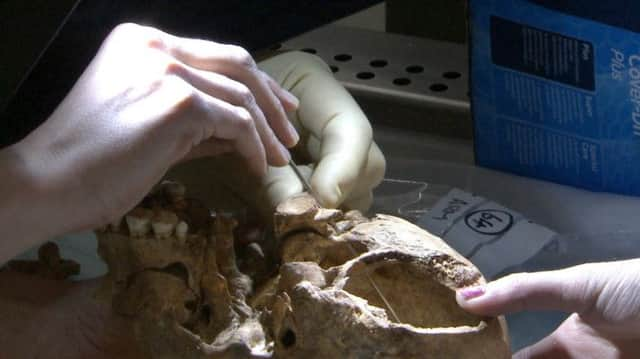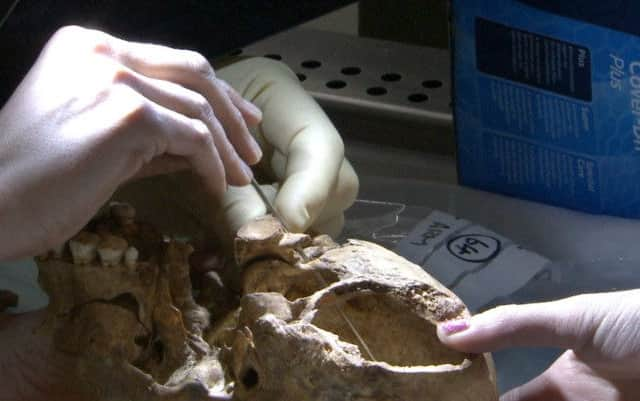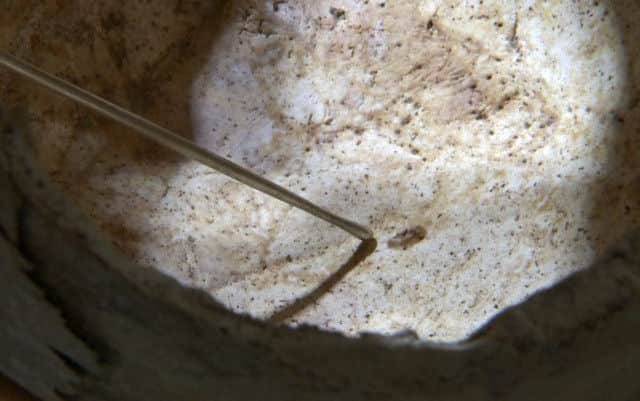Richard III killed by sword or halberd, scientists discover


And while no-one can know whether the last Yorkist king uttered the valiant final words “a horse! a horse! my kingdom for a horse!”, scientists believe they can shed further light on just how Richard III came to meet his maker.
The latest discovery in fact suggests he may well have offered his kingdom for a helmet, as experts say Richard is likely to have been killed when a sword or spike was thrust up from the base of his neck after he lost the protective head wear.
Advertisement
Hide AdAdvertisement
Hide AdThe details of the violent episode which played out at the Battle of Bosworth in 1485 emerged after Professor Guy Rutty undertook a forensic examination of what is thought to be Richard’s skull.


What has been hailed as the “eureka moment” during the analysis of the skeleton found under a council car park in Leicester in 2012 was caught on camera by a University of Leicester documentary filmmaker.
Prof Rutty, a Home Office pathologist with 19 years of experience, said it was one the team “will all remember”.
State-of-the-art CT and micro-imaging scans were used to analyse the 500-year-old bones of Richard III, whose links with North Yorkshire are famous.
Advertisement
Hide AdAdvertisement
Hide AdOsteologist Dr Jo Appleby concluded that the wounds, which caused the fatal blow which would lead Henry Tudor to the throne, “were probably inflicted by a sword or the top spike of a bill or halberd”.


Professor Sarah Hainsworth, a professor of material engineering at the university, said: “Using modern forensic examination, we have discovered that Richard’s skeleton sustained 11 wounds at or near the time of his death.
“Nine of them were to the skull, which were clearly inflicted in battle.
“The injuries to the head suggest he had either removed or lost his helmet. The other two injuries that we found were to a rib and his pelvis.”
Advertisement
Hide AdAdvertisement
Hide AdFor Prof Rutty, of East Midlands Forensic Pathology Unit, the fact that he was examining the skull of a former king failed to influence the way he worked.
He said: “Just because he was a king did not make a difference.
“Using the specialist lighting equipment we have in the forensic mortuary at the Leicester Royal Infirmary, which was key to the examination, I then was able to put the three injuries together on pathological grounds.
“We all realised I had identified the potential lethal injury to King Richard III.”
Advertisement
Hide AdAdvertisement
Hide AdThe rightful claim to the bones of Richard III were the subject of a long-running dispute between Leicester and Yorkshire following their discovery by archaeologists.
Campaigners, which included his descendents, fought an unsuccessful legal battle to have the monarch reburied in York.
The Plantagenet Alliance lost a judicial review last May when High Court judges ruled there was “no duty to consult” over the monarch’s final resting place.
His remains will instead be re-interred in Leicester Cathedral next month, but the people of Yorkshire are being given an opportunity to honour the monarch and gather at York Minster.
Advertisement
Hide AdAdvertisement
Hide AdDetails of the commemorations, which will see organisations including York Museums Trust, York University and York Council honour the occasion, were announced earlier this week.
A Choral Evensong will be held in the Minster on March 26 before a procession walks from the cathedral, along Stonegate to St Helen’s Square and ending up at the Mansion House. The following day, a display dedicated to Richard will open at the Yorkshire Museum in York, looking at the myths which have shaped modern views of the king.